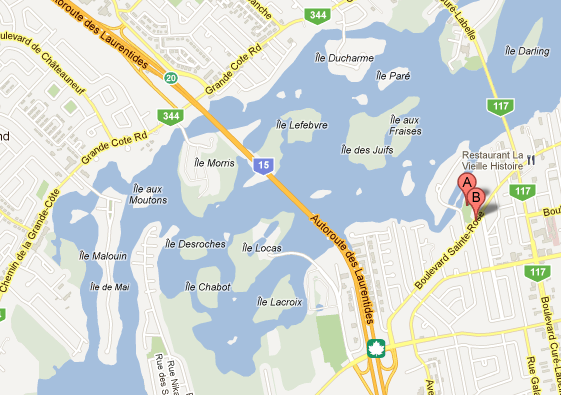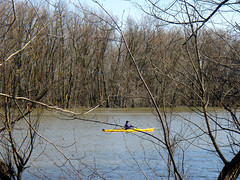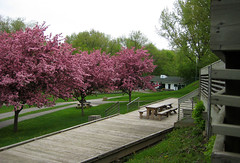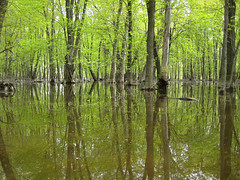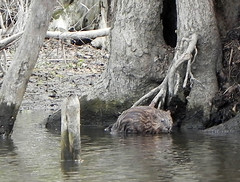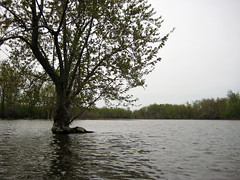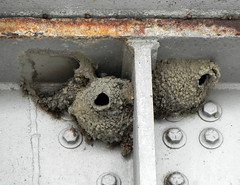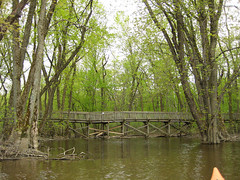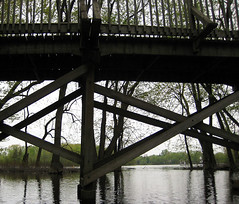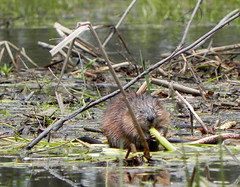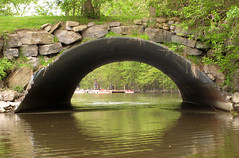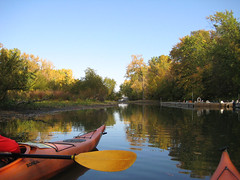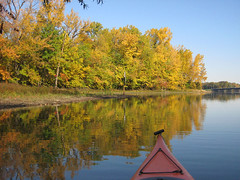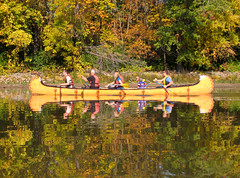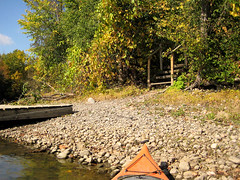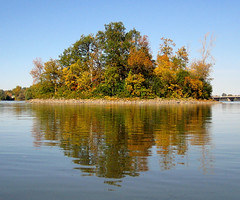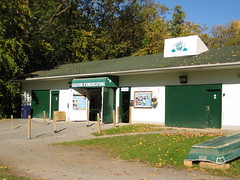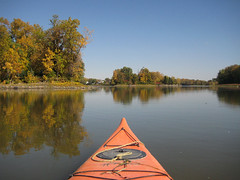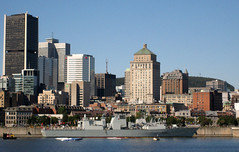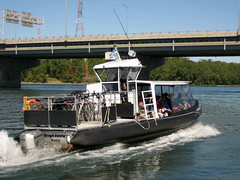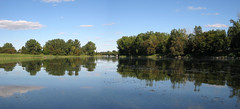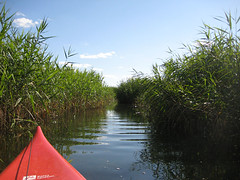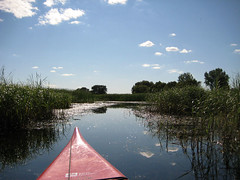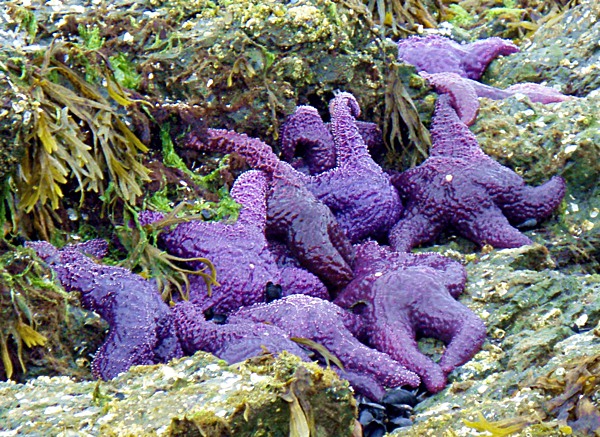Cross-posted from Kayak Yak Yak.
This the first of two three catchup posts of my summer visits to the Parc de la Rivière-des-Mille-Îles.
Saturday April 30, 2011
My very first trip this year was two weeks before rentals opened, on April 30, when I did a Saturday scouting expedition, thinking that if I could find a good launch site close to the west side of the Park and the marsh, I would return with the Dragonfly on the Sunday and get a jump on the summer. I hopped off the 73 bus at the gate to the Parc, and trotted down to the landing, meeting the water rather before I expected: the small steep muddy beach that serves as a launch site was underwater, as was the bank above the beach, as were the trees at the top of the bank. The gangway to the dock, instead of sloping down, sloped up to the dock; the anchor point was underwater. Across the flooded channel, I could see various forlorn pieces of summer equipment. I estimated the water was six or seven feet above the ordinary level.
I followed Boulevard Sainte-Rose west, detouring down side streets down to follow glimpses of the water, and eventually down a km-long packed mud track past the golf course on the west side of des Laurentides which accessed the footbridge over to Île Locas. Last summer, I’d seen fishermen casting from dirt shoulders on either side of the bridge. No dirt shoulders now; I would have had somehow to scramble down the bank and directly into the boat. That after a kilometer or so of slog. Everywhere the river was up over its banks and in amongst the trees. In mid-channel, it was the colour of cold milky coffee, and briskly moving. I saw a single kayaker paddling upstream in a yellow hard-shell boat that was the brightest colour in the landscape, but I could just envision myself trying to make headway in my own little yellow Dragonfly, with its flat bottom and metronome swivel. Or not.
May 22, 2011
Three weeks later, the rentals were open and the cherry blossoms were out, although the sun wasn’t. The day was grey and chill, courtesy of The Spring that Never Was, but not raining, not blowing, and I was not to be stopped.
I headed upstream, paddling against the current beneath the bridge to Île Gagnon, and up along the south bank of the river, underneath the autoroute des Laurentides and then south of Île Lacroix. Where Île Lacroix bends, the woods at the river’s edge were flooded deeply enough for me to take the kayak into them, which I did.
I was sitting in my kayak, with the nose against grassy mud, looking around, when I caught sight of a distinctive striped pointed shape underwater off my bow. I misparsed it at first, thinking snake, and the sudden flaring of the front flippers was disconcerting (Hooded cobra! Way too many B-movies at an impressionable age). I recognized it just as it began to float upwards to the surface, and I snuck a hand out for the camera. At that point, unfortunately, the turtle recognized me as foreign and possibly threatening. Flippers, head, snapped back into its shell, lying almost edge-on to the surface, and almost hidden in mud. I waited. It poked its head gingerly out a couple more times, but each time was quicker to withdraw, so I decided to do the polite thing, and take myself off.
On the other hand, nothing and no one was going to put this muskrat off the reed it was munching with all the blissful obliviousness of a child left alone with a stick of rock candy, sitting on a mat of rotten last-summer leftovers under the flooded trees.
The sight of the marsh itself was a shock. With the water this high, I’d anticipated being able to get well into it, but . . . where was the marsh? Where was the land? Nothing remained but a grey expanse of water with some brown stubble of last year’s reeds. I wandered the watery wastes in bewilderment, round the back of the little island that used to be, took photographs of the bare marooned trunks and sodden branches, and strange cocoons wrapped around desiccated reeds (which came out blurry, autofocus having favoured the stark branches in the background). The only visible living critter was another muskrat crouching on a root knuckle and looking distinctly morning-after-ish. But although the day was dull and the early spring colours were drab, the birds were feeling anything but, with birdsong coming from all around.
For lunch, I sat on the steps at Île Gagnon, with the kayak hitched to the upright and floating at my feet. I watched the grey waters and the sparse traffic, three or four kayaks, a couple of outboards. Then I paddled across to the north side of the river, past Île aux Moutons – I didn’t feel like fighting the current alongside Île de Mai – between Îles Chabot and Clermont, and up and around Île Thibault, with the intention of checking on the activity underneath the bridge from the Autoroute de Laurentides, where I had seen swallows nest-building last summer. I was too early in the year; the only nests were abandoned ones, and it was not easy staying on station, against the current, to get a photograph. Going under the bridges, riding the current, was entertaining.
Also between Île Thibault and Île Lefebre, as best I can tell on the map, there’s a wooden bridge over a stretch of marsh, which I was able to paddle under, and in amongst the trees, look back out at the river. Somewhere around there, another muskrat was making short work of another reed.
And then I crossed over above Île des Juifs, came round the top of Île Gagnon, through the tunnel under the roadbridge, and let the current sweep me back to the landing. Mission accomplished.
